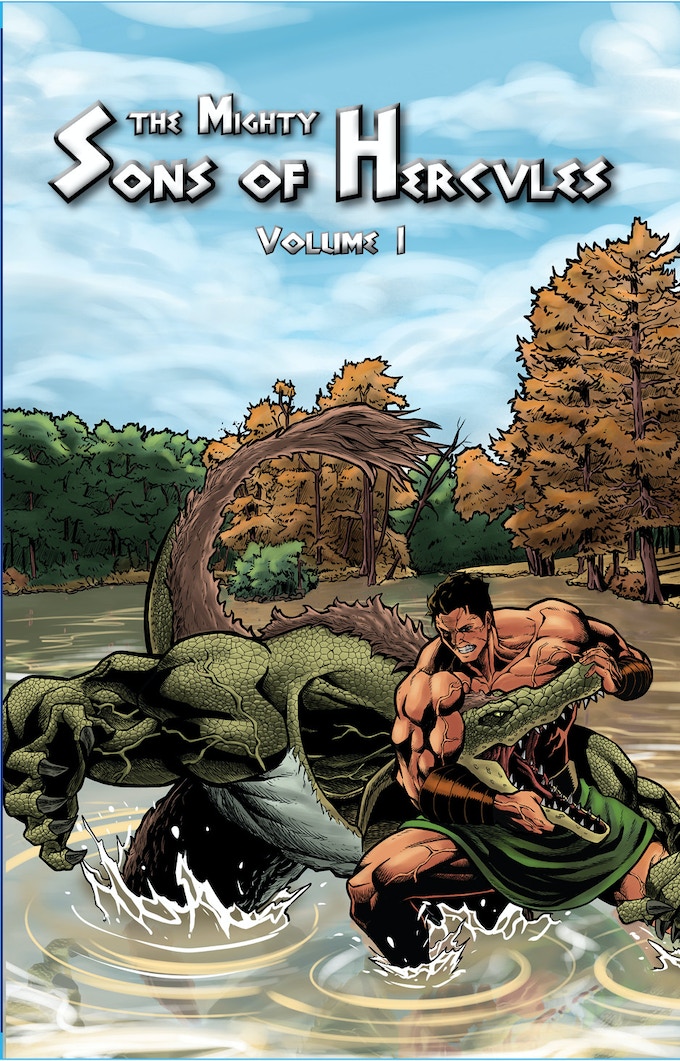The Mighty Sons of Hercules: an interview with P. Alexander of Cirsova Magazine
Saturday , 15, July 2023 Uncategorized 2 CommentsLong ago, in ages past… there were men who travelled the world, seeking adventure. Fighting injustice, defending the weak and the helpless, looking to right wrongs wherever they are found: these were the Mighty Sons of Hercules!
Wherever righteousness must have a champion, there you will find the Mighty Sons of Hercules! Whenever there is need and no mortal man can suffice, a Mighty Son of Hercules shall appear!
In addition to its namesake magazine of thrilling adventure and daring suspense, Cirsova Publishing is known for ambitious and eclectic projects such as turning pulp classics into light novels and reviving out-of-print adventures written by now-obscure authors. Now, Cirsova sets its eyes on stories of strongmen champions striving against trials worthy of Hercules himself with its new Kickstarter campaign for THE MIGHTY SONS OF HERCULES.
P. Alexander, Cirsova editor, graciously agreed to answer questions about the strongman genre and his upcoming The Mighty Sons of Hercules anthology.
What is the strongman genre, also known as peplum? How did you discover it and what drew you to the genre?
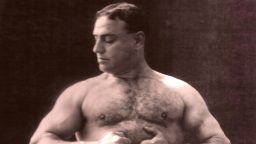
This really goes back to the 19th century and the circus strongman. You had these musclebound performers who would wow audiences with amazing feats of strength: bending iron bars, being able to take any punch, lifting someone sitting on a chair one-handed. In fact, this type of performer was one of the archetypes upon which the Superhero grew out of.
With the advent of cinema, you had a new medium in which to showcase these feats. It was only natural that you’d come up with some sort of narrative reason for the strongman to be doing what he did, and rescuing people, especially damsels in distress, was a perfect justification.
In 1914, one of the earliest film superhero franchises launched with Gabriele D’Annunzio’s Cabiria. Maciste, the strongman slave character in this historical epic about the Punic Wars became a breakout sensation in silent Italian cinema. Played by former stevedore Bartolomeo Pagano, Maciste would go on to be the main character of over two dozen silent films showcasing his physical acting from 1914 to 1927.
In the pulp era, you also had the rise of bodybuilders becoming international superstars in their own right. Even growing up as a kid in the 90s, I still saw endless references to Charles Atlas who had advertisements in every comic book and pulp zine back in the 1940s & 50s.
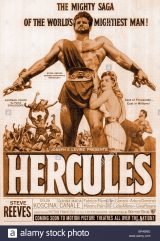 The 1950s also saw a huge boom in costume epics set in antiquity. Ben-Hur and The Ten Commandments are probably two of the most well-known and famous. But between these two, in 1958, there was a Hercules movie starring bodybuilder Steve Reeves, which was an international break-out sensation. This is what really kicked off the modern mid-20th century strongman boom. In its wake, you had hundreds of movies about Hercules and other mythic heroes from antiquity. Among these were another 26 Maciste movies, all made from 1960 through 1964.
The 1950s also saw a huge boom in costume epics set in antiquity. Ben-Hur and The Ten Commandments are probably two of the most well-known and famous. But between these two, in 1958, there was a Hercules movie starring bodybuilder Steve Reeves, which was an international break-out sensation. This is what really kicked off the modern mid-20th century strongman boom. In its wake, you had hundreds of movies about Hercules and other mythic heroes from antiquity. Among these were another 26 Maciste movies, all made from 1960 through 1964.
Peplum and Sword & Sandal go hand-in-hand with the strongman genre, though not exclusively so. There are plenty of other movies that fit the bill that don’t feature a heroic strongman, but Maciste and Hercules-type characters are the ones that spring to mind most often when talking about the genre.
As for how I got into it, these movies were still available to networks for [probably very cheap] syndication packages and were frequently shown on Saturday mornings or as mid-day matinees well into the 90s. A few even made it to MST3K.
There was awhile that they kind of disappeared, but thanks to YouTube, it’s a lot easier to see these old movies again.
What stories, films, and/or TV shows best represent the peplum genre?
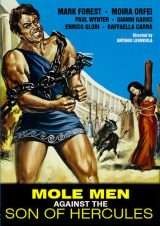 The ones I remembered the most from when I was a kid, before I got back into the genre as an adult, were Hercules Against the Sons of the Sun [where Hercules washes up in Meso-America and helps the good Indians fight the bad Indians], The Triumph of Hercules [where the villain has a magic flute that allows him to control the seven golden giants], and Mole Men Against the Son of Hercules [in which Mole Men fight against a Son of Hercules].
The ones I remembered the most from when I was a kid, before I got back into the genre as an adult, were Hercules Against the Sons of the Sun [where Hercules washes up in Meso-America and helps the good Indians fight the bad Indians], The Triumph of Hercules [where the villain has a magic flute that allows him to control the seven golden giants], and Mole Men Against the Son of Hercules [in which Mole Men fight against a Son of Hercules].
There were also several movies in which a “Son of Hercules” would be fighting Genghis Khan and the Mongols. Those always made me think something was up, because I knew Hercules and my Greek Mythology and knew that Hercules never fought against the Mongols.
As it turns out, there was a 1960s syndication package called The Sons of Hercules, which packaged several Maciste movies and other Sword & Sandal adventures into bundles that could be sold to networks as weekend programming. It had its own country western theme song and everything.
What makes strongmen stand apart from today’s heroes?
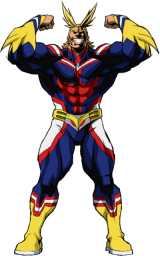 One of the key aspects of the strongman in peplum movies was that they were unapologetically forces for good. They protected the weak and the innocent, asking for nothing: doing right and good was their destiny. Sometimes they might be duped by a villain [usually an evil seductress with magic powers, potions, or amulets], but they were never anti-heroes, never morally ambiguous… and if they wronged someone, they had to atone.
One of the key aspects of the strongman in peplum movies was that they were unapologetically forces for good. They protected the weak and the innocent, asking for nothing: doing right and good was their destiny. Sometimes they might be duped by a villain [usually an evil seductress with magic powers, potions, or amulets], but they were never anti-heroes, never morally ambiguous… and if they wronged someone, they had to atone.
There’s a selflessness that you don’t see in many cinematic heroes these. Probably the closest contemporary example that fits the template of the classic strongman hero would be All Might from My Hero Academia – he saves people with a smile!
Speaking of All Might, and Superman, too, what was peplum’s influence in comics?
Like I said, the strongman is one of the roots of the Superhero. On one side, you have the masked vigilante or detective, whose origins are in characters like Zorro or the Scarlet Pimpernel. On the other, you have the strongman, who shows up unmasked, like Superman or Captain Marvel: he doesn’t hide what he is; he’s justice incarnate. Of course, the Zorro side of things brings with it secret identities to even these characters in comics.
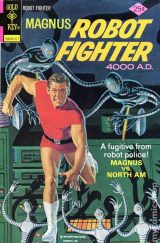 Now, particularly in comics, a couple of my favorites are Mighty Samson and Magnus, Robot Fighter. These show the flexibility of the strongman in terms of settings. Mighty Samson takes place in a post-apocalyptic New York, where a Maciste-like character protects the local survivors, fighting mutant monsters, raiders, and an evil would-be queen who wants to enslave them. In Magnus, Robot Fighter, you have a different far future scenario: a highly civilized high-tech society where occasionally [frequently] technology runs amok, and Magnus is there to punch the robots in the face and save the day.
Now, particularly in comics, a couple of my favorites are Mighty Samson and Magnus, Robot Fighter. These show the flexibility of the strongman in terms of settings. Mighty Samson takes place in a post-apocalyptic New York, where a Maciste-like character protects the local survivors, fighting mutant monsters, raiders, and an evil would-be queen who wants to enslave them. In Magnus, Robot Fighter, you have a different far future scenario: a highly civilized high-tech society where occasionally [frequently] technology runs amok, and Magnus is there to punch the robots in the face and save the day.
Both of these comics came out during the Peplum boom, and the influence is unmistakable, particularly in Mighty Samson.
What about peplum still appeals to today’s audiences?
I think that there has been such a long morass of flawed anti-heroes coming out of comics and cinema that there’s an unmet thirst for truly good heroes that people can look to. That feeling that when they’ve arrived, the day is already saved. Really, this appeal is why people still cling on to the idea of Superman no matter what contemporary writers try to do to him.
What makes The Mighty Sons of Hercules stand out in the genres of peplum and fantasy?
The idea for The Mighty Sons of Hercules was to come up with a showcase, like the Sons of Hercules series in the 60s, of fun and exciting peplum adventure. We wanted to feature some of Cirsova Magazine’s best authors, so we got in touch with those who we felt would be an ideal fit for the project. A few authors had stories that they were able to tweak to fit the collection, some wrote wholly new stories, while the showpiece of the collection is a previously unpublished Melkart novella from Mark Mellon, essentially working an existing character/IP into the framework of this anthology.
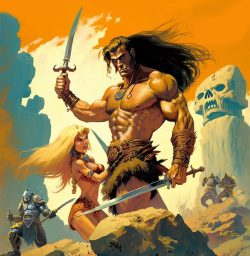 If you’re a fan of these movies, I think you’re going to like what you’ll find.
If you’re a fan of these movies, I think you’re going to like what you’ll find.
If you’ve never seen any peplum movies but enjoy the kind of thrilling adventure fiction that you can read in Cirsova Magazine, you’ll still love these, because we’re still delivering the exciting action and swashbuckling heroics.
We are not deconstructing the strongman, we’re not spoofing him: these are eight original tales of eight daring heroes that we hope you will love and enjoy enough to clamor for more. And any of these heroes could come back for more if there’s interest.
What adventures may these eight Sons of Hercules find?
Maxus is going up against a cult that is performing human sacrifices in an attempt to taint and curse the land in “Maxus and the Lake of Blood”, by Abraham Strongjohn.
Melkart gets drugged and thrown into King Mithradatos’ mines, where he leads a slave rebellion against the king of the Pontus in Mark Mellon’s “Melkart Unchained”.
Umaeo has to rescue a princess from the Tyrant of Syracuse and fights a giant preying mantis in “Mighty Umaeo and the Tyrant’s Test’, by Owen G. Tabard.
In Misha Burnett’s “Summer of the Stranger”, Makheist teaches the youths of a nomadic tribe the value of fighting for their freedom and standing up to bandits that demand tribute.
Tumak is tasked with dealing with savage beast and a curse which could cost the life of a princess in “Against the Beast of Gnak-Kor”, by Nathan Dabney.
Diametrius must deal with a jealous, spurned woman who unleashes dragons on the countryside to get her revenge in Michael Tierney’s “Battle of the Rages”.
Herakles fights to stop an evil queen from unleashing a plague of darkness and devils in “Ever the Blood Endures”, by Adrian Cole.
Maciste must first convince slaves that they deserve to be liberated before he can save from a race of evil serpents in “Maciste in the Land of the Snakes”, by J. Manfred Weichsel.
The Kickstarter campaign for THE MIGHTY SONS OF HERCULES is open through Monday, July 31st, 2023.
[…] This weekend, we had an interview go up where we talked about peplum and The Mighty Sons of Hercules Kickstarter! […]
Currently reading Maxus and the Lake of Blood in the collection and really enjoying it.
